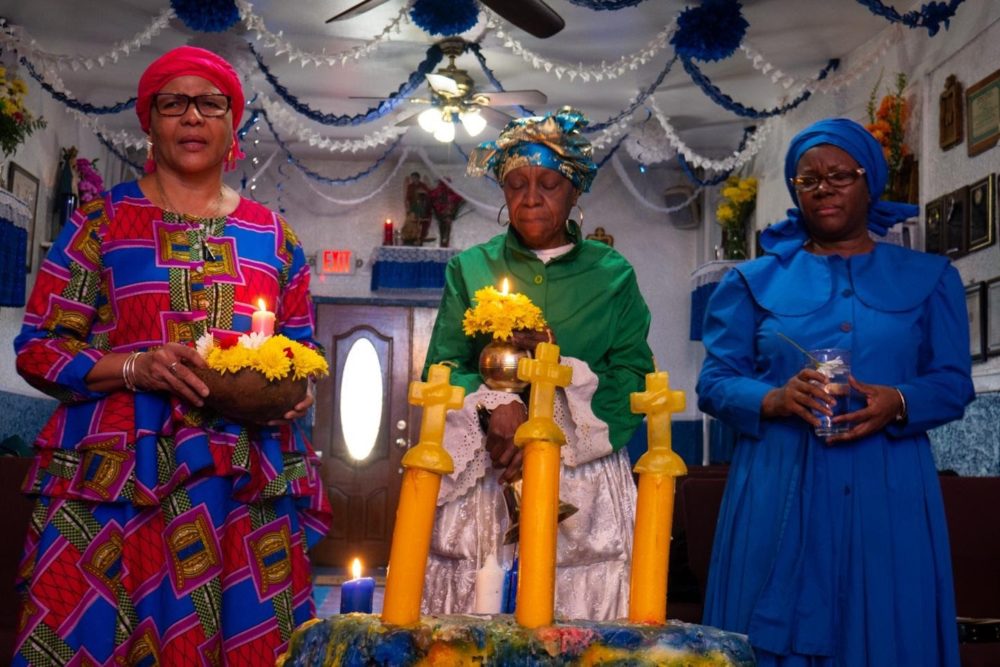The Opening of Service
Esohe Osabuohien | eco2132@columbia.edu

The parishioners at the Yoruba Orisha Baptist Church in Brooklyn are adorned in white and multicolored headwraps, as well as dresses traditional to Trinidad and Tobago, the country from which most of the members immigrated.
The white headwraps have a dual purpose, said a longtime member known simply as Mother Cora, an older woman who has been with the church since its earlier days.
“It is to signify that today is Holy Communion, and also how we know who’s a visitor as they would not know ‘white’ is the customary uniform for today,” she explains with a smile.
As other members file in on a recent Sunday, they are greeted by the newly decorated vestibule that is covered in Christmas lights, blue and white streamers, and a banner that reads: “Happy Anniversary,” in preparation for the church’s anniversary and celebration of Our Lady of Lourdes Day. They are also greeted by the Rev. Selwyn Wilkinson, the spiritual father of the Yoruba Orisha Baptist Church, who founded the church in 1998 upon immigrating to New York City from Trinidad and Tobago.
The Yoruba Orisha Baptist Church, located on 2089 Nostrand Avenue in Flatbush, is primarily made up of people from the Caribbean who brought with them to Brooklyn elements of Spiritual Baptist tradition, Trinidad Orisha practice and other forms of ancestral worship. These traditions mirror the customs of [Cuban] Santeria in that they are rooted in the Yoruba religion – an African ancestral faith – that was brought to the Americas and Caribbean during the transatlantic slave trade and syncretized with Christianity.
After the members take their places, the women elders, known as “mothers,” are positioned at the front of the church sitting along the side of the ornately decorated altar that is adorned with candles, a Black Jesus Christ, a photo of former President Barack Obama, flowers, and a bell. As the mothers continue lighting candles in the vestibule, everyone quiets signifying that service is about to begin.
“If you’re going to go out the night before, then we must still remember that church service begins at 11 a.m., sharp. Church elders should be here by 10:30 a.m” said Wilkinson sternly.
The church’s phone line states that service starts promptly at 11 a.m., but when the majority of the members arrive and set up, it is a quarter to noon.
Before the service can fully start, the mothers of the church instruct the congregation to form a circle around a rainbow-colored pillar of wax known as the Steps of Calvary. At the top of the steps sit three yellow candles in the shape of crosses, representing Jesus Christ and the two thieves on Mount Calvary. Below the top step, are candles of various colors and sizes, a pink candle is also lit and a bowl filled with water and a single white carnation is placed at the base of the pillar alongside a silver anchor and gold handbell. Next, one of the mothers walks around the circle pouring Florida Water cologne onto our hands. The room is instantly filled with the Water’s light citrus scent mixing with the heavy smoke from the candles creating a sweet fragrance in the space.
